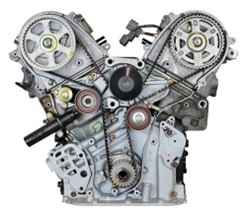Posted on 2/28/2023

All four stroke Otto cycle engines use some kind of timing belt (Black toothed belt in the picture), chain, or gears to keep all of the moving parts inside the engine in alignment and moving in the correct order. Each cylinder in an engine has four distinct events that complete one power cycle; intake, compression, power, and exhaust strokes. The piston goes up and down two times per one power cycle. Valve openings and closings must be timed to the piston position and are controlled by camshaft rotation (Large gears on the top are attached to the camshafts). While the piston osolations are controlled by crankshaft rotation (Small gear on the bottom is on the front of the crankshaft). The crankshaft makes two complete revolutions for each single revolution of the camshaft. These components must work in concert with each other for the engine to run smoothly and efficiently. If this alignment gets out of sync it can cause numerous problems. ... read more
Posted on 5/8/2015
Hello Albert Lea motorists, let's talk about your often-unnoticed but extremely essential PCV valve. The energy from exploding fuel is what powers your engine. But some of the vapors from the explosions escape into the lower part of the engine, called the crankcase. The crankcase is where your engine oil hangs out. These gases are about 70% unburned fuel. If the gases were allowed to stay in the crankcase, they would quickly contaminate the oil and turn it to sludge. Albert Lea folks know that sludge is one of the biggest enemies of your engine, clogging it up, eventually leading to expensive failures. Also, the pressure build up would cause seals and gaskets to blow out. Therefore, these gases need to be vented out. Pre-1963, gasoline engines had a hose that let the dangerous fumes vent out into the air. In 1963, the federal government required gas engines to have a special one-way valve installed to help ... read more